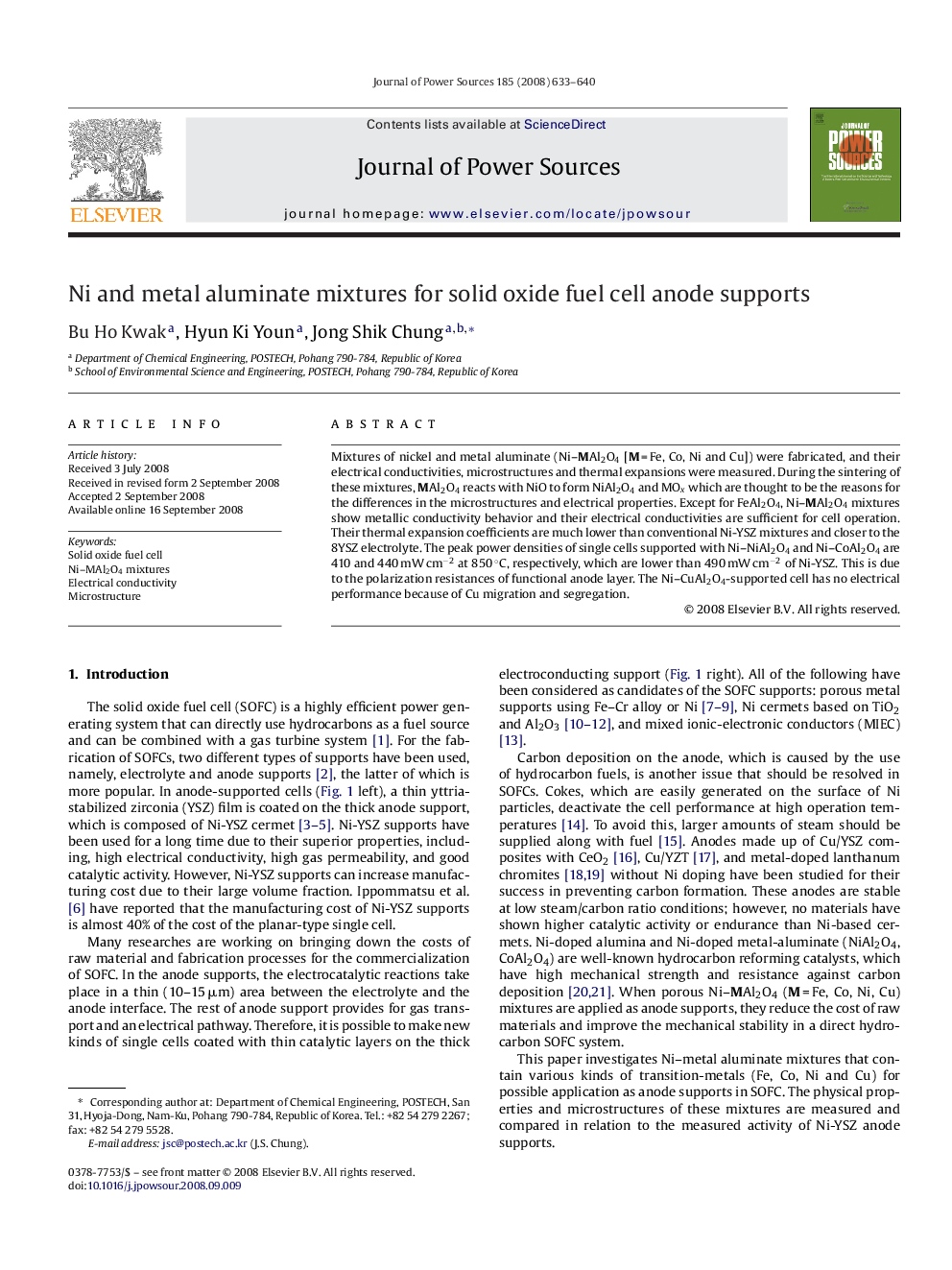| Article ID | Journal | Published Year | Pages | File Type |
|---|---|---|---|---|
| 1290161 | Journal of Power Sources | 2008 | 8 Pages |
Abstract
Mixtures of nickel and metal aluminate (Ni-MAl2O4 [M = Fe, Co, Ni and Cu]) were fabricated, and their electrical conductivities, microstructures and thermal expansions were measured. During the sintering of these mixtures, MAl2O4 reacts with NiO to form NiAl2O4 and MOx which are thought to be the reasons for the differences in the microstructures and electrical properties. Except for FeAl2O4, Ni-MAl2O4 mixtures show metallic conductivity behavior and their electrical conductivities are sufficient for cell operation. Their thermal expansion coefficients are much lower than conventional Ni-YSZ mixtures and closer to the 8YSZ electrolyte. The peak power densities of single cells supported with Ni-NiAl2O4 and Ni-CoAl2O4 are 410 and 440 mW cmâ2 at 850 °C, respectively, which are lower than 490 mW cmâ2 of Ni-YSZ. This is due to the polarization resistances of functional anode layer. The Ni-CuAl2O4-supported cell has no electrical performance because of Cu migration and segregation.
Related Topics
Physical Sciences and Engineering
Chemistry
Electrochemistry
Authors
Bu Ho Kwak, Hyun Ki Youn, Jong Shik Chung,
